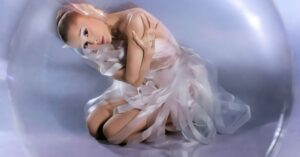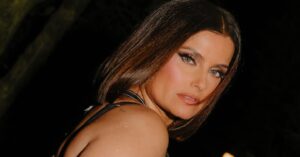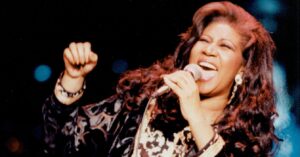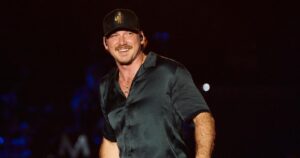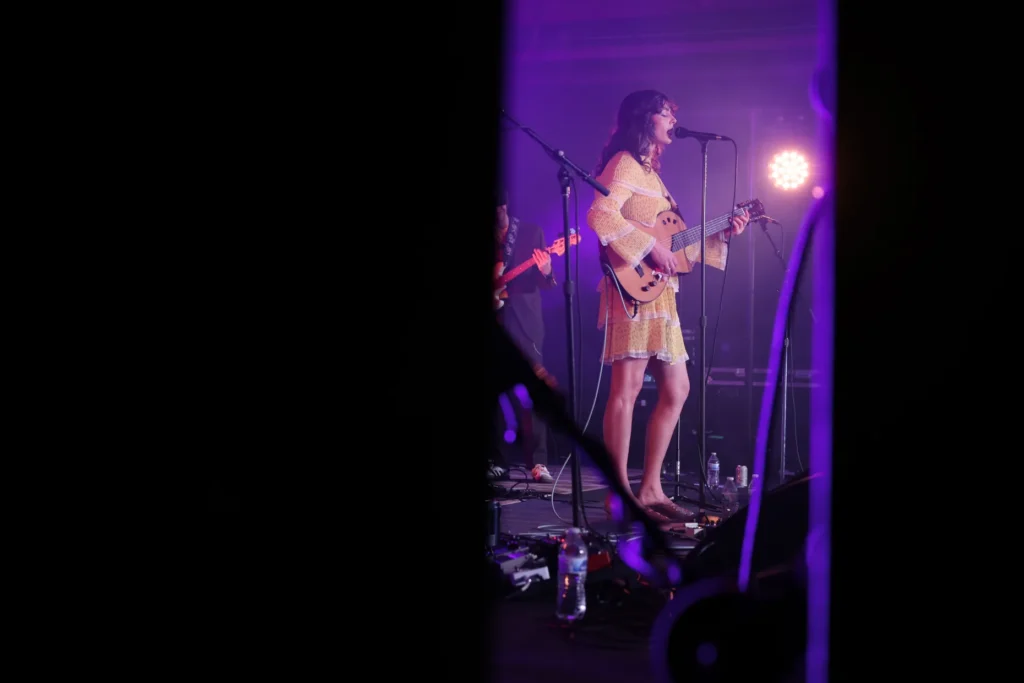
A festival where curiosity was the headliner
The first-ever Sound And Gravity festival didn’t ask you to arrive with a plan.
It invited you to show up with curiosity.
From the moment gates opened, the emphasis wasn’t on who you already knew.
It was on what you were about to discover.
Across multiple stages, immersive art environments, and science-forward activations, “discovery” wasn’t a buzzword.
It was the backbone of the whole weekend.
This was a festival designed to make you feel like a traveler again, not just a ticket-holder.
You could sense it in the routing of footpaths.
In the way sets overlapped to encourage serendipity.
In the friendly prompts from volunteers to “see what’s around the corner.”
It wasn’t about chasing a headliner.
It was about letting the gravity of sound pull you somewhere unexpected.
And it worked.
By sundown on day one, you could see pockets of new fans forming in front of artists they hadn’t heard of two hours prior.
You could hear strangers swapping discoveries in food lines and water stations.
You could even feel it in the crowd flow.
People moved slower, lingered longer, and listened deeper.
That’s rare.
The festival’s mission: turn listening into exploration
Most festivals promise a soundtrack to your weekend.
Sound And Gravity promised a map.
Not a map in the GPS sense, but a map of possibilities.
Its programming blended live music, experimental audio, interactive installations, STEM pop-ups, and audio-tech showcases.
The organizers built a framework that encouraged first encounters.
First encounter with a new genre.
First encounter with a new technology.
First encounter with a new way to experience space, light, and sound.
Even the festival app nudged discovery with subtle prompts like “Nearby: immersive drum forest” or “Happening now: micro-set on the drifting stage.”
The effect was gentle but powerful.
It pushed you to choose curiosity over comfort.
It felt less like scrolling a lineup and more like stepping into a living laboratory of culture.
If you’ve ever wished festivals were less predictable and more playable, this was that wish granted.
The festival’s design tuned your senses for surprise.
It made discovery feel both intentional and effortless.
And it built a communal ritual around finding something new, together.
Sound as architecture, gravity as guide
The name wasn’t metaphorical.
Sound was treated like architecture.
Gravity was treated like narrative.
A clever spatial layout grouped stages by energy rather than genre.
Low-gravity zones featured ambient, neo-classical, dub, and modular sets.
Mid-gravity zones pulsed with eclectic indie, jazz, and future soul.
High-gravity zones delivered kinetic club music, bass-heavy mutations, and main-stage momentum.
As you moved, your body became a barometer.
You weren’t just walking between acts—you were transitioning between gravitational fields.
The sound systems were tuned for clarity at human scale.
Bass was present but never punishing.
The mids were warm.
The highs were detailed without fatigue.
It made long listening sessions feel easy, which is a quiet superpower for a discovery-first festival.
The visual language echoed the physics theme.
Floating sculptures marked wayfinding points.
Kinetic light rigs responded to crowd density.
Projection mapping bent surfaces into waves and orbits.
Even the merch was playful: star charts reimagined with artist icons, constellations built from waveform fragments, and tees that changed hue under UV light.
Most festivals brand their stages.
Sound And Gravity branded the spaces between stages, too.
It made wandering feel like part of the show.
The stages: crafted for character, not just capacity
The Orbit Stage: where momentum met melody
The Orbit Stage served as a gravitational anchor.
It favored artists whose music kept bodies in motion without burning ears or flattening nuance.
Sets flowed like well-sequenced albums.
You’d hear polyrhythmic house, feverish percussion, and melodic techno woven into a narrative arc.
The lighting here was cinematic, rising slowly and peaking organically rather than strobing for cheap thrills.
It made dancing feel like participating in a story.
That storytelling impulse set the tone for the whole festival.
Explore modern festival stage design principles with resources like the Festival & Event Production guide.
The Orbit Stage felt like an evolved template built on those ideas.
It prioritized dynamics, pacing, and the interplay between artist and environment.
The Drift: a moving micro-stage for ephemeral sets
The Drift was a small platform that literally moved.
It cruised a looping path through the grounds at slow walking speed.
Artists performed micro-sets: 15 minutes to imprint a moment and disappear.
It brought flash-mob energy without the chaos.
You could be walking to refill your bottle and suddenly find yourself wrapped in a perfect, fleeting performance.
The Drift democratized discovery because you didn’t have to work to find it—it found you.
Those who followed it like comet-chasers stitched together a totally different festival timeline than those who stayed anchored.
Both were valid.
Both were thrilling.
Curious about how mobile stages change engagement?
Discover event innovation case studies and how micro-sets boost serendipity on platforms like EventMB.
The Drift validated the concept by turning idle walking time into art time.
The Observatory: deep listening without the shush
The Observatory respected silence without enforcing it.
Chairs and soft mats encouraged grounded listening.
Projection domes turned sound into visible contours.
Artists explored timbre, texture, and slow builds.
This wasn’t a “quiet at all costs” zone.
It was an invitation to listen actively.
You could talk softly, take notes, sketch the music in your head.
It felt like a listening party crossed with a planetarium.
For ambient and experimental artists, it was a dream setting.
For newcomers, it was an open door.
If you’re curious about spatial audio and deep-listening practices, seek out resources on binaural and ambisonic sound at places like Dolby Institute or academic labs that share public-facing explainers.
The Observatory made those ideas tangible and friendly.
Curation with a scientist’s curiosity and a DJ’s intuition
Programming was the secret sauce.
The lineup wasn’t a checklist of familiar names.
It was a mosaic designed to reward risk-taking.
Where many festivals silo genres, Sound And Gravity blended them.
A percussive dance act might precede a modular ambient set, which might flow into a brass-forward ensemble that snuck in broken-beat rhythms.
Transitions felt daring but logical.
Organizers clearly approached curation like a great DJ set—balancing energy, texture, and surprise.
What stood out was the respect for the audience’s intelligence.
No dumbing down.
No pandering.
Just a clear belief that curiosity is contagious if you create the right conditions.
The result was a festival where the average attendee saw more “unknowns” than “knowns,” and loved it.
It’s a rare and welcome counterweight to the headliner arms race.
Technology that served the art, not the other way around
The festival leaned into audio tech, but gently.
There were spatial arrays and clever diffusion.
There were live-coding sets and modular synth gardens.
But the tech never shouted.
It supported the music, the mood, the conversation.
A standout installation let attendees map their motion into sound textures using simple gestures.
Another offered a “mixing sandbox” where you could rearrange stems from a commissioned piece and hear how arrangement shifts change feeling.
These weren’t tech demos.
They were learning tools disguised as play.
For those curious about entry points into creative audio, explore communities that share approachable guides and workshops.
Platforms like Coursera and Ableton’s Learning Music offer great starting points for anyone lit up by what they heard.
The festival didn’t just showcase talent.
It recruited future creators.
Beyond stages: neighborhoods of experience
The Resonance Lane
Resonance Lane spotlighted independent labels, zine-makers, and audio artisans.
You could flip through limited pressings, test boutique pedals, and chat with mastering engineers about dynamics.
It felt like a market built from conversations rather than transactions.
Many booths offered short listening sessions on reference headphones.
It wasn’t a sales pitch, more like an invitation to care about sound quality.
People noticed.
If you’ve ever wondered why vinyl pressings or masterings vary, check resources like Discogs for edition notes and label histories.
Resonance Lane turned that sort of deep-dive curiosity into a friendly, tactile ritual.
The Gravity Garden
The Gravity Garden slowed time.
Shade structures, soft seating, and wind-driven chimes created a soft landing between high-energy sets.
Every hour, a “quiet storm” session offered gentle guided listening with minimal narration.
It was a reminder that recovery is part of a great festival.
You don’t burn out.
You breathe, then return.
Well-being programming at festivals is finally getting its due.
If you’re designing your own event or community meetup, borrowing an idea like Gravity Garden can be transformative.
It protects attention as much as it protects bodies.
The Field Lab
The Field Lab blurred audiences and artists.
Short workshops on polyrhythms, live sampling, field recording, and DIY synthesis filled quickly.
Walking out, people carried notebook sketches of rhythms, phone memos of found sounds, and a fresh sense of agency.
In a discovery-focused festival, the best souvenir is a skill.
Field Lab understood that.
To translate curiosity into practice, explore beginner-friendly tools like BandLab, Soundtrap, or VCV Rack.
The lab’s message was simple: you don’t need permission to start making sound.
The sound of surprise: standout sets and moments
Moments, not just names, defined the weekend.
An unannounced sunrise set pulled the crowd toward the low-gravity zone, where a drummer built a slow polyrhythmic ladder under pastel skies.
People cried quietly.
No phones up, just bodies syncing to breath and brushwork.
Later, a brass collective marched through a food corridor, folding syllables of the crowd’s chatter into call-and-response riffs.
It was participatory composition at street level.
On The Drift, a 12-minute set by a duo using prepared guitar and granular processing turned a casual walkway into sacred hush.
Kids sat cross-legged.
Parents stopped mid-sentence.
Then the stage rolled on, leaving a lingering echo like a good dream.
At the Observatory, a composer projected a live spectrogram while performing, teaching the audience to “see” harmonics and phase relationships as part of the show.
In ten minutes, the room learned a new visual language.
Those are discovery moments you carry home.
Design details that made discovery easy
Little details matter when your promise is exploration.
Signage used verbs instead of labels—“Drift here,” “Deep listen,” “Try this,” “Rest now.”
Maps were illustrated, not just functional, hinting at mood and energy.
Wayfinding beacons pulsed softly in time with stage tempos, an ambient guide for the lost.
Water stations were abundant and themed to each zone.
Refilling became a chance to chat with a volunteer about what you’d just heard.
Accessibility was thought through: sensory-friendly hours, clear paths, resting pods, and captioned talks.
These choices didn’t just accommodate—they expanded who got to participate in discovery.
If you’re building events, note how low-friction design creates high-value experiences.
Fewer micro-frustrations mean more bandwidth for awe.
Sound And Gravity nailed that ratio.
Food, drink, and the taste of attention
Curation extended to taste.
Vendors were selected for quality and clarity: simple menus, fast service, and surprising flavors.
One stall paired herbal iced teas with suggested listening “pairings” based on tempo zones.
Another offered snacks at half portions to encourage grazing between sets.
You didn’t have to commit to a 30-minute food line.
You could keep moving, keep discovering.
Even the coffee bars did single-origin tastings before noon, framing them like mini listening sessions for your palate.
It was clever.
It reinforced the festival’s philosophy that attention—what you give, how you give it—can be cultivated.
Community as co-curator
What makes a discovery-first festival thrive?
The crowd.
Sound And Gravity trusted attendees to be part of the curation by moving, talking, sharing, and showing up for unknowns.
A simple digital feature let people “ping” sets they loved with one-word tags—“soothed,” “lifted,” “alien,” “warm.”
Those tags appeared anonymously on ambient displays in each zone.
It was a living mood board shaped by the people.
There was no incentive other than presence.
And somehow, that made it honest.
Communities form fast when curiosity is rewarded.
By day two, you could spot recurring faces in each gravity zone, like friendly constellations.
People waved.
Comparisons were traded.
Recommendations flew.
The festival gave structure; the people gave it life.
Sustainability made simple and visible
Sustainability wasn’t hidden backstage.
It was visible, learnable, and doable.
Clearly marked waste streams with volunteers modeling sorting.
Borrowable cup systems that actually worked because return points were everywhere.
Incentives for transit riders and cyclists, including a repair station that doubled as a listening booth.
Even the main lighting rigs leaned on efficient fixtures, and daily power usage was displayed as a simple, understandable dashboard.
It felt like a community project rather than corporate compliance.
That tone matters.
Curious about how events can lower footprint without raising friction?
Check out guides from organizations like A Greener Future that translate best practices into friendly checklists.
Sound And Gravity’s approach showed that small, obvious choices add up to big cultural shifts.
Why discovery beats predictability
We love what we know.
But growth lives in what we don’t.
Music discovery reminds us that taste isn’t a fence—it’s a field.
Festivals that over-index on headliners risk turning into nostalgia museums.
There’s magic in introducing audiences to artists they didn’t know they were waiting for.
It’s the difference between consuming and participating.
Sound And Gravity bet on participation.
It bet on the ancient joy of wandering.
It bet on the human appetite for surprise.
And it paid off.
Discovery doesn’t mean disorientation.
It means guided openness.
The festival’s frameworks—zones, pacing, micro-sets, listening labs—kept newness approachable.
Like a good teacher, it offered scaffolding without telling you what to think.
You built your own map by walking it.
That map didn’t end at the exit.
You took it home, in playlists, notebooks, and new habits of attention.
The ripple effect: afterlives of a first edition
First editions are hard.
This one felt unusually complete.
Not perfect—nothing real is—but complete.
The lessons will ripple outward.
Artists who played micro-sets tested ideas they’ll expand in clubs and studios.
Attendees who tried a field recording workshop are already pointing phones at the world with different ears.
Organizers at other festivals will note the crowd’s appetite for intelligence and try their own versions of The Drift or The Observatory.
That’s how culture moves—through brave experiments that become shared patterns.
If you found yourself changed by what you heard, there are simple ways to keep the momentum.
Follow the unknown artists you loved.
Buy a release from a small label you discovered.
Attend a local listening session or start one.
Set aside one evening a week to let an algorithm-free playlist surprise you.
Discovery is a habit, not a one-off.
It grows with practice.
Tips for first-time discoverers at future editions
- Start slow in a low-gravity zone to tune your ears, then ramp up energy later.
- Let The Drift find you at least twice a day; those moments anchor memory.
- Pick one workshop—any workshop—and take notes like you mean it.
- Ask one stranger what moved them; follow their recommendation immediately.
- Eat small, drink water often, and schedule rest like a set.
- Turn off push alerts; you can’t discover while distracted.
These simple habits protect your bandwidth for wonder.
They keep you available to what you didn’t know you needed.
Who this festival is really for
If you crave spectacle, there’s plenty to enjoy.
But Sound And Gravity is built for people who like to look closely.
For listeners who believe attention is a practice.
For dancers who care about dynamics, not just drops.
For tinkerers who want to touch the tools behind the sound.
For friends who prefer to come home with stories that start, “You won’t believe what we stumbled into…”
It’s for the curious.
And the curious are a bigger crowd than the industry sometimes thinks.
Links to explore and learn more
- Learn creative audio fundamentals: Ableton Learning Music
- Build beginner-friendly beats online: BandLab
- Try collaborative creation in the browser: Soundtrap
- Research label histories and pressing details: Discogs
- Browse accessible online courses: Coursera
- Event sustainability resources: A Greener Future
These links are not the festival’s own resources.
They’re waypoints for your own discovery.
Follow what pulls you.
The future of Sound And Gravity
No one knows exactly how a festival grows after a debut.
The best ones don’t get bigger just to get bigger.
They get clearer.
They double down on the elements that worked—deep listening, micro-sets, learning spaces—and keep experimenting at the edges.
They keep the spirit spacious, the design attentive, and the curation fearless.
If Sound And Gravity stays true to its thesis—that discovery is the main act—it won’t just have a future.
It’ll have a gravitational field all its own.
Related questions to spark your own exploration
- Which new artists did attendees discover most frequently at the inaugural Sound And Gravity festival?
- How did The Drift’s mobile micro-sets change audience behavior compared to fixed stages?
- What listening practices can help first-time visitors get the most from The Observatory?
- How can small festivals implement sustainability that attendees actually notice?
- What tools are best for beginners inspired by Field Lab workshops to start creating music at home?
- In what ways did spatial audio choices affect dance-floor dynamics across gravity zones?
- How might future editions balance surprise with accessibility for neurodiverse attendees?
- What curation strategies help audiences embrace unknown artists without headliner anchors?
- Could the tag-based mood display become a standard feature at discovery-led events?
- What lessons can community organizers borrow from Gravity Garden for non-music gatherings?
SEO title
Discovery took center stage at the inaugural Sound And Gravity festival
SEO description
A deep dive into the inaugural Sound And Gravity festival, where discovery, design, and deep listening turned a music weekend into a living lab for curiosity.
Permalink (30 characters)
sound-and-gravity-discovery
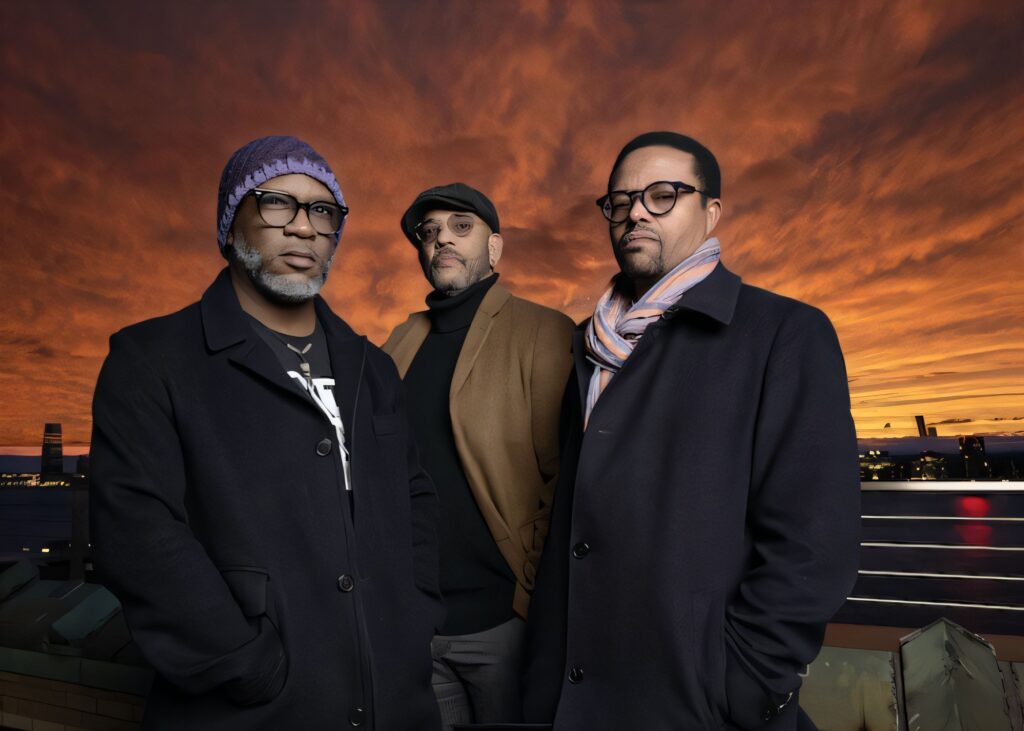
Also Read: Harry Potter Looms Large for Ronan Day-Lewis


